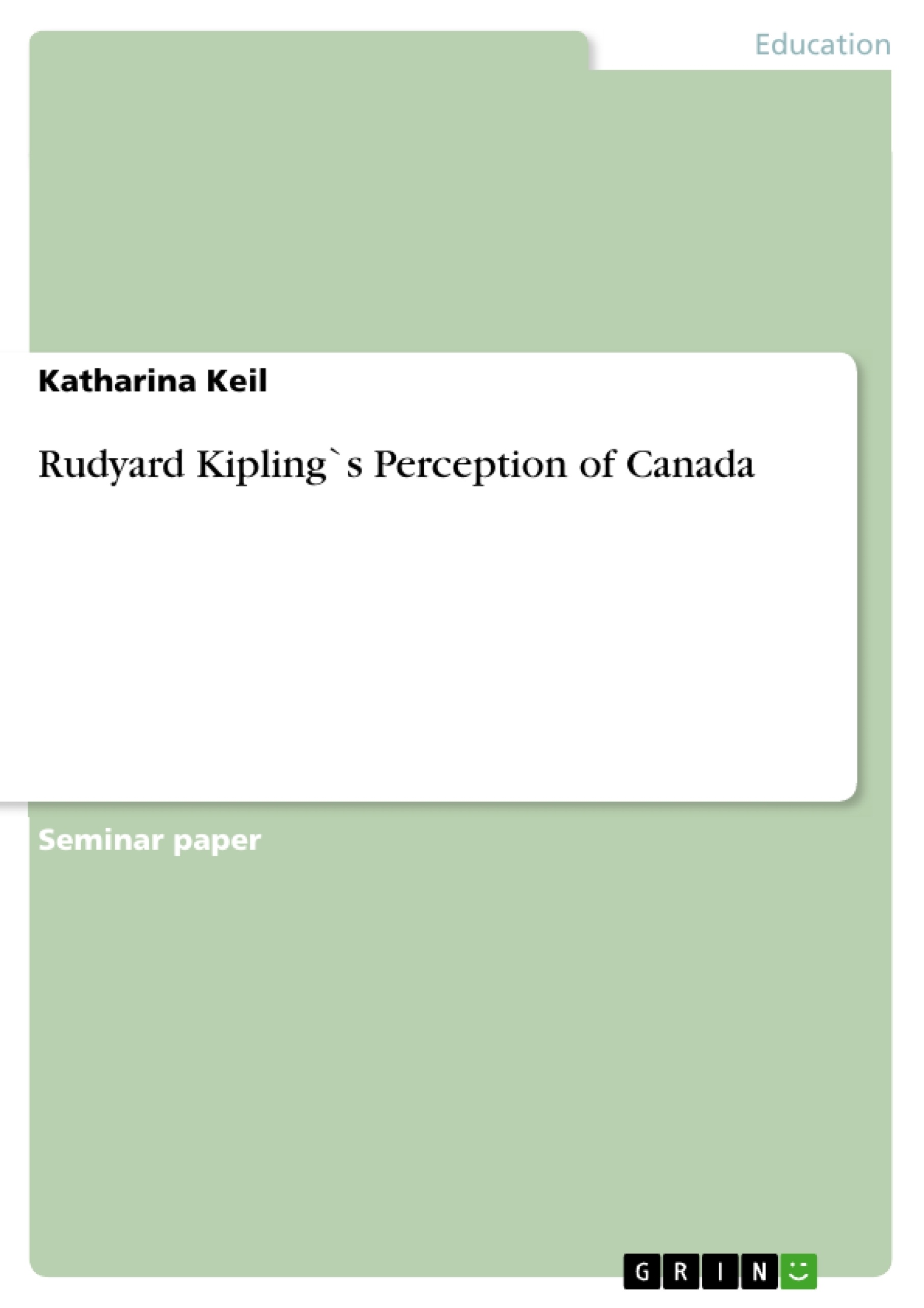The following term paper deals with Rudyard Kipling´s perception of Canada in his letters “From Sea to Sea” and “Letters to the Family”. Kipling went to Canada twice in his younger years. In his letters, Kipling writes about experiences in his travels. To analyze his perception of Canada, two main topics were chosen: Firstly, the “Image of Canada” and secondly “The attitude and stereotypical images of Canadians” in Kipling´s texts “From Sea to Sea” and “Letters to the Family”.
At the very beginning of this term paper I will give a general overview about the “Theory on stereotypes”. Because of the fact that I will be a future teacher it is essential to me to also take a look on “Stereotypes in school” as I named the following aspect. It is important to know how to handle stereotypes in class because the students should learn tolerant thinking.
After that, a closer look at the author - Rudyard Kipling - will be taken. A short biography will inform the reader about his life and the background of his thinking.
The main part of that work is divided into two topics, “The image of Canada“ and “Attitudes and stereotypical images of Canadians”. Here, Kipling´s perception will be discussed, analyzed and proven by several quotes.
To round this off, a conclusion will be drawn in the end.
Table of Contents
- Introduction
- Theory on stereotypes
- Stereotypes in School
- About the author – Rudyard Kipling
- The Image of Canada
- The Attitude and stereotypical images of Canadians
- Conclusion
- References
Objectives and Key Themes
This term paper analyzes Rudyard Kipling’s perception of Canada as depicted in his letters "From Sea to Sea" and "Letters to the Family." The paper focuses on Kipling's portrayal of the “Image of Canada” and “The attitude and stereotypical images of Canadians” in his writings. The author explores how Kipling’s own experiences and biases influenced his perceptions and how stereotypes are used and function in literary texts.
- Stereotypes and their impact on perception
- Rudyard Kipling's personal perspective and experiences in Canada
- The representation of Canada in Kipling's letters
- Stereotypical images of Canadians in Kipling's writings
- The role of stereotypes in literary texts
Chapter Summaries
- Introduction: This chapter introduces the topic of Rudyard Kipling's perception of Canada and outlines the paper's structure and focus on "The Image of Canada" and "The attitude and stereotypical images of Canadians." It also highlights the author's future role as a teacher and the importance of understanding stereotypes in the classroom.
- Theory on stereotypes: This chapter examines the definition and evolution of the term "stereotype" and explores its psychological implications. It analyzes various perspectives on stereotypes, emphasizing their role in forming prejudiced judgments and their impact on individuals and society.
Keywords
This paper examines the concept of stereotypes, specifically focusing on their application in literary texts and the portrayal of national and cultural identities. It explores the personal experiences and perceptions of Rudyard Kipling, analyzing his writings to identify the specific stereotypes he employs and their impact on his representation of Canada and Canadians.
- Citation du texte
- Katharina Keil (Auteur), 2009, Rudyard Kipling`s Perception of Canada, Munich, GRIN Verlag, https://www.grin.com/document/133661



